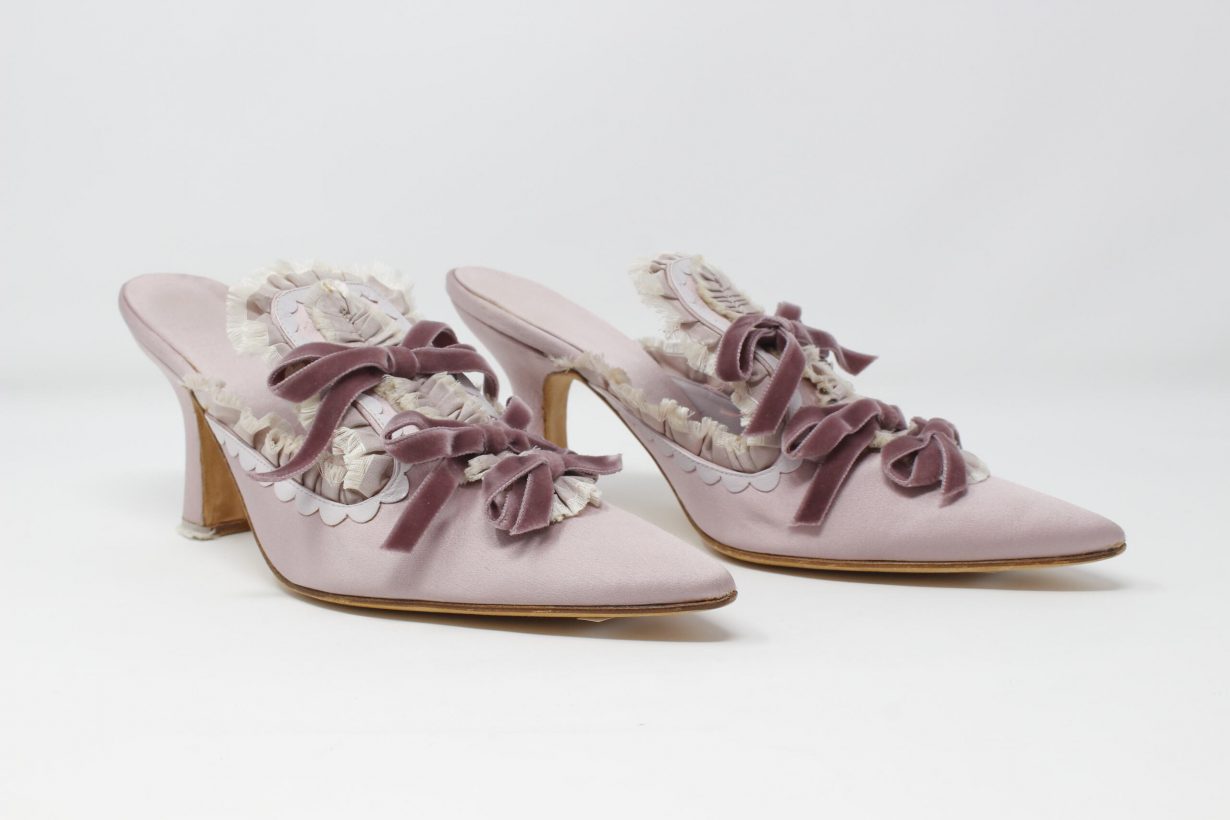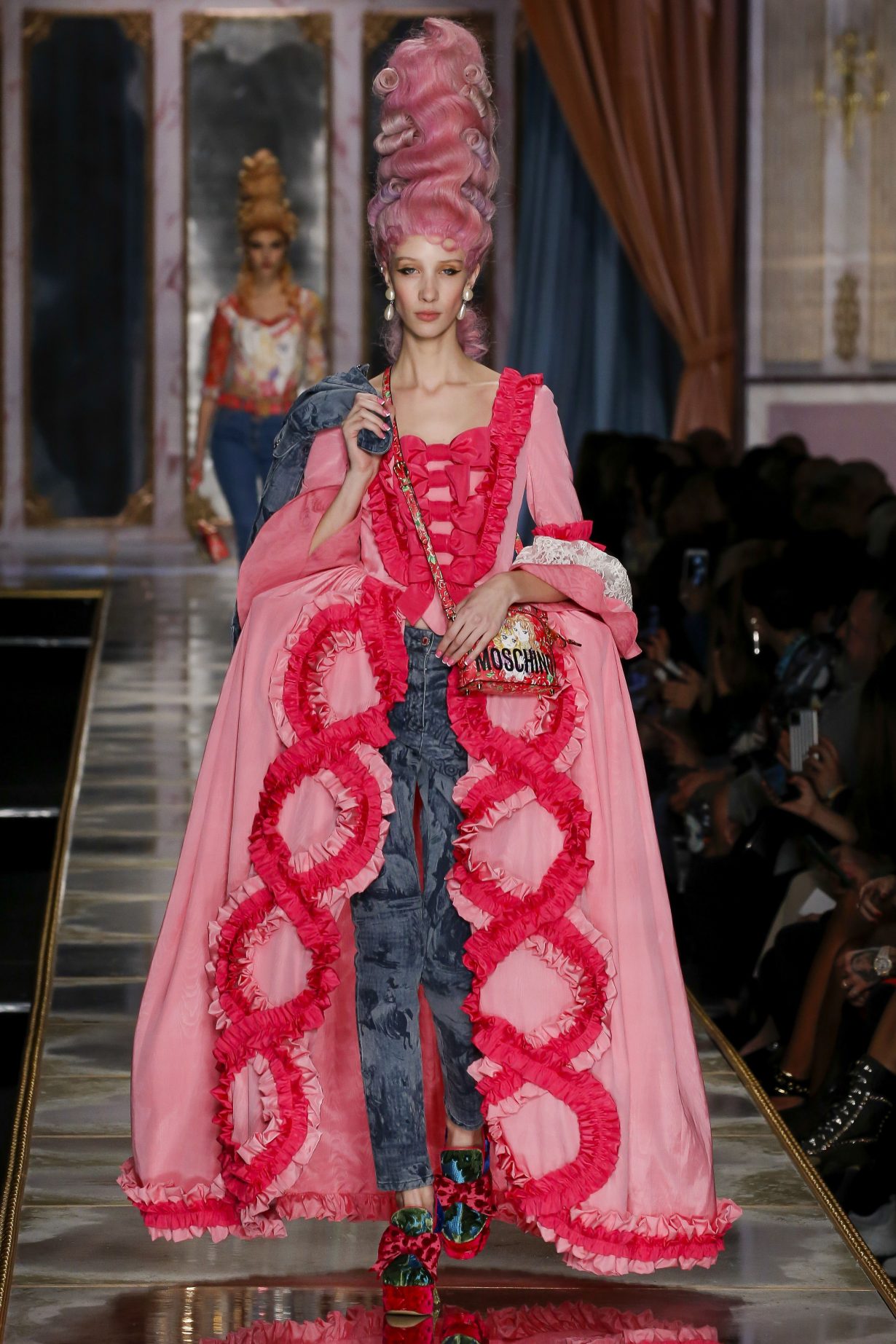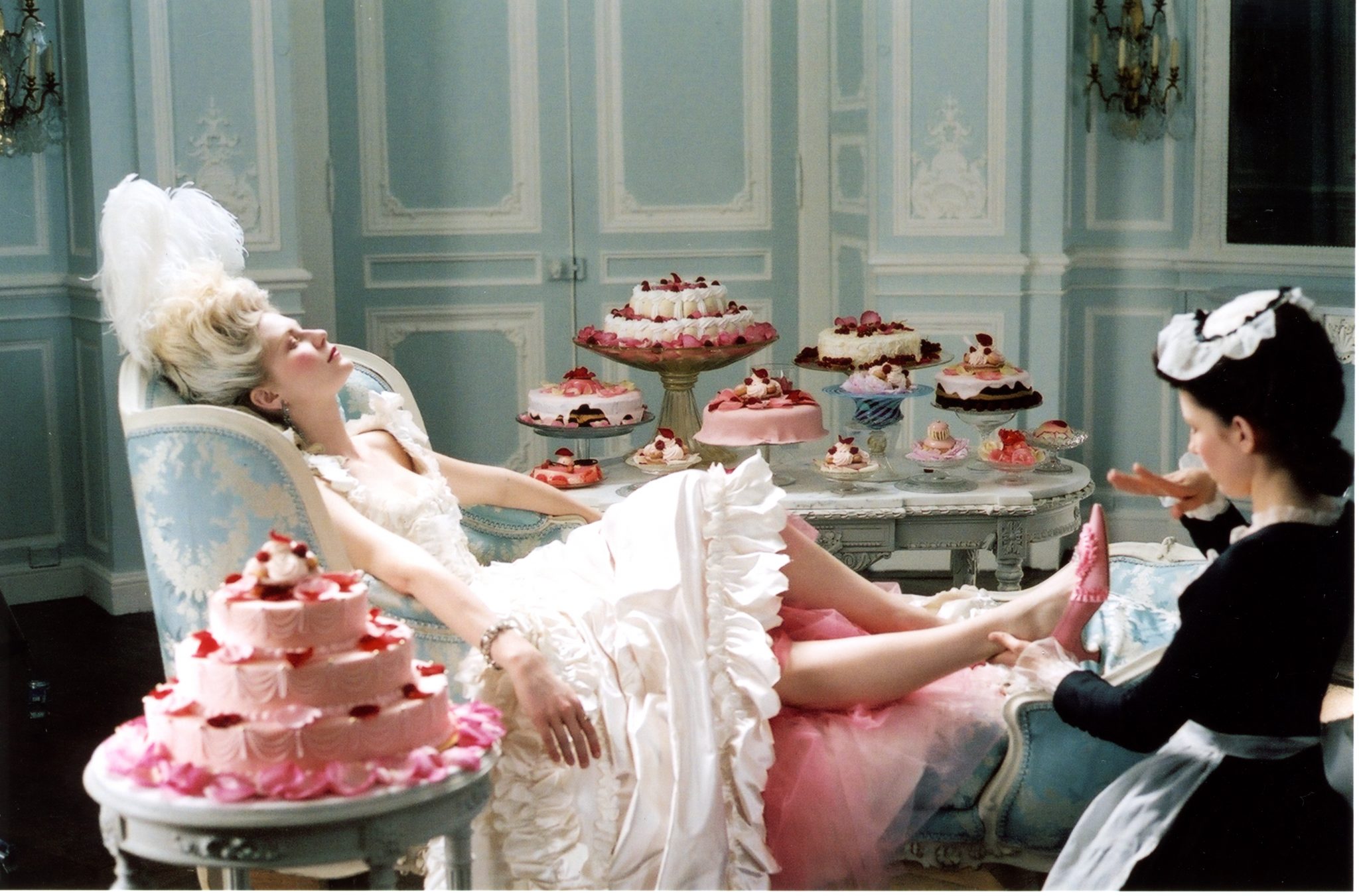Framing the dethroned French queen as an early master of image-making, this show reminds us why Marie Antoinette remains so culturally potent
At the V&A South Kensington’s new exhibition Marie Antoinette Style, the doomed queen is resurrected yet again. The air is charged with gilt and ghosts, from 250 objects, including Marie Antoinette’s very own silk slippers and jewels, to fragments of court dress so elaborate they look like reliquaries. In addition to Marie Antoinette’s own archive, the show includes couture pieces from Dior, Chanel, Moschino, John Galliano, Manolo Blahnik and Vivienne Westwood, among others. The V&A stages her life not simply as a biographical arc but as an enduring cultural spectacle that continues to hold influence today. The show, for its part, makes a convincing argument that Marie Antoinette’s style, between panniers, ribbons and towers of hair, is not merely historic dress but a kind of proto-Instagram aesthetic, one that has been endlessly revived, recycled and remixed across centuries.
Fashion, as the exhibition reminds us, was Marie Antoinette’s language. She spoke in chemises and jewel-toned poufs, telegraphing a personal brand to a voracious court and a gossip-hungry public. She even popularised the use of mouches, beauty patches, which were coded signals in courtly flirtation, a kind of eighteenth-century version of the StarFace spot sticker. The hair alone deserves a manifesto: the famous pouf, an architecture of wire, horsehair and pomade, could be scaled into entire tableaux, naval victories, allegories of liberty and botanical scenes. Big hair was not just fashion but politics, where physically taking up space at court was to declare yourself sovereign. Today, that impulse lives on in drag culture and pop performance, for example in Chappell Roan’s towering fuchsia beehive or Lady Gaga’s Marie Antoinette-inspired sculptural wigs, which served as a spectacle of power, a reminder that hair and fashion work as semiotic tools, signalling subcultural allegiance and aesthetic lineage. The pouf has become a symbol of power reclaimed and exaggerated, its drama an unapologetic refusal to ‘take up less space’.


In cinema, Sofia Coppola’s Marie Antoinette (2006) serves as the blueprint for the Y2K rococo revival, from bubblegum macarons and champagne-fuelled ennui to Converse worn under gowns (all scored by The Strokes and Siouxsie Sioux). Within the show, set photographs, costume sketches and original garments are displayed, positioning the film as a cultural archive and framing Coppola’s vision as a hinge between historical excess and 2000s pop sensibility.
Manolo Blahnik’s candy-coloured silk mules, velvet kitten heels and lemon-yellow slippers trimmed with bows, designed for the film, become characters in their own right. Coppola famously insisted that the shoes be filmed like objects of desire, strewn across chaise longues and heaped in pastel piles, a rococo fantasy rendered in velvet and satin. In one legendary scene, a pair of Converse sneakers is tucked among the shoes, a knowing wink to the early-2000s audience. Coppola refused to present Marie Antoinette as just a tragic figure; instead she found the real teenager inside the myth, a girl exiled from Austria at fourteen who tried to carve out an identity amid the velvet claustrophobia of Versailles. Her film made Marie Antoinette into the proto-2000s it girl, patron saint of curated decadence, a lens through which millennial culture could explore themes of girlhood, alienation and rebellion.
The V&A exhibition hints at this same reframing. This is not a tale of a pithy queen who sent France into revolution, but of an early image-maker. Marie Antoinette weaponised fashion, using the pouf and the chemise à la reine not as frivolous whims but as semiotic grenades, scandalising the etiquette and bending monarchy into a theatre of appearances where politics and aesthetics became inseparable. Sena Jeter Naslund, the American author who wrote the historical novel Abundance: A Novel of Marie Antoinette (2006), called the queen’s reign a ‘visual feast’, a reminder that ‘the eye is mightier than the ear’. The memory of what is seen, the show suggests, outlasts what is said. This is why Marie Antoinette survives, both historically and, crucially, aesthetically. Her visual afterlife collapses history into image, recasting what Roland Barthes would call a ‘myth’: a second-order sign system where the signifier (like the pouf or chemise) roams free of its own original courtly context. In this sense, Marie Antoinette’s power was, and remains, profoundly visual. It becomes a feedback loop, in which her image is reproduced, contested and recirculated, by her, by the court and later by her revolutionary detractors. Marie Antoinette can be read as both the author and product of her own myth, performing a kind of proto-Instagram logic where aesthetics and images reference and amplify themselves.

Marie Antoinette’s downfall is documented with equal care, tracing the slide from courtly fantasy to revolutionary reckoning, and her eventual death. In one of the final rooms, darkly lit and sombre, a locket with strands of her hair interwoven with that of her young son, and the word amitié inscribed in pearls, are hung beside the last note she ever wrote, trembling on the edge of death before her execution aged thirty-seven (‘My God, have pity on me! My eyes have no more tears to cry for you my poor children, adieu, adieu!’). They’re objects that collapse the rococo fantasy into something terribly human. But this tension is perhaps what makes Marie Antoinette eternally seductive. Her story, as Marie Antoinette Style’s curator, Sarah Grant, notes, ‘has been re-told and re-purposed by each successive generation to suit its own ends’. She was vilified, then romanticised, then memeified (‘Let them eat cake’ still circulates centuries after she didn’t say it). Her aesthetic endures because it is elastic: it can mean excess, rebellion, tragedy, artifice, youth, death.
Walking through the exhibition feels like passing through a dreamscape where chandeliers float overhead and ribbons multiply endlessly. Marie Antoinette’s world presents to us today an aesthetic proposition: what if beauty was the whole point? What if artifice was not a distraction, but a form of power? In American Vogue, in 2006, Coppola remarked, ‘You’re considered superficial and silly if you’re interested in fashion.’ But the show reminds us that fashion can be both silly and serious, both frivolous and political (must the two exist in opposition?!). And that may be why Marie Antoinette remains so culturally potent: she lets us indulge in the fantasy that adornment can be rebellion, that pleasure can be serious work.
Marie Antoinette Style at V&A South Kensington, London, through 22 March 2026
